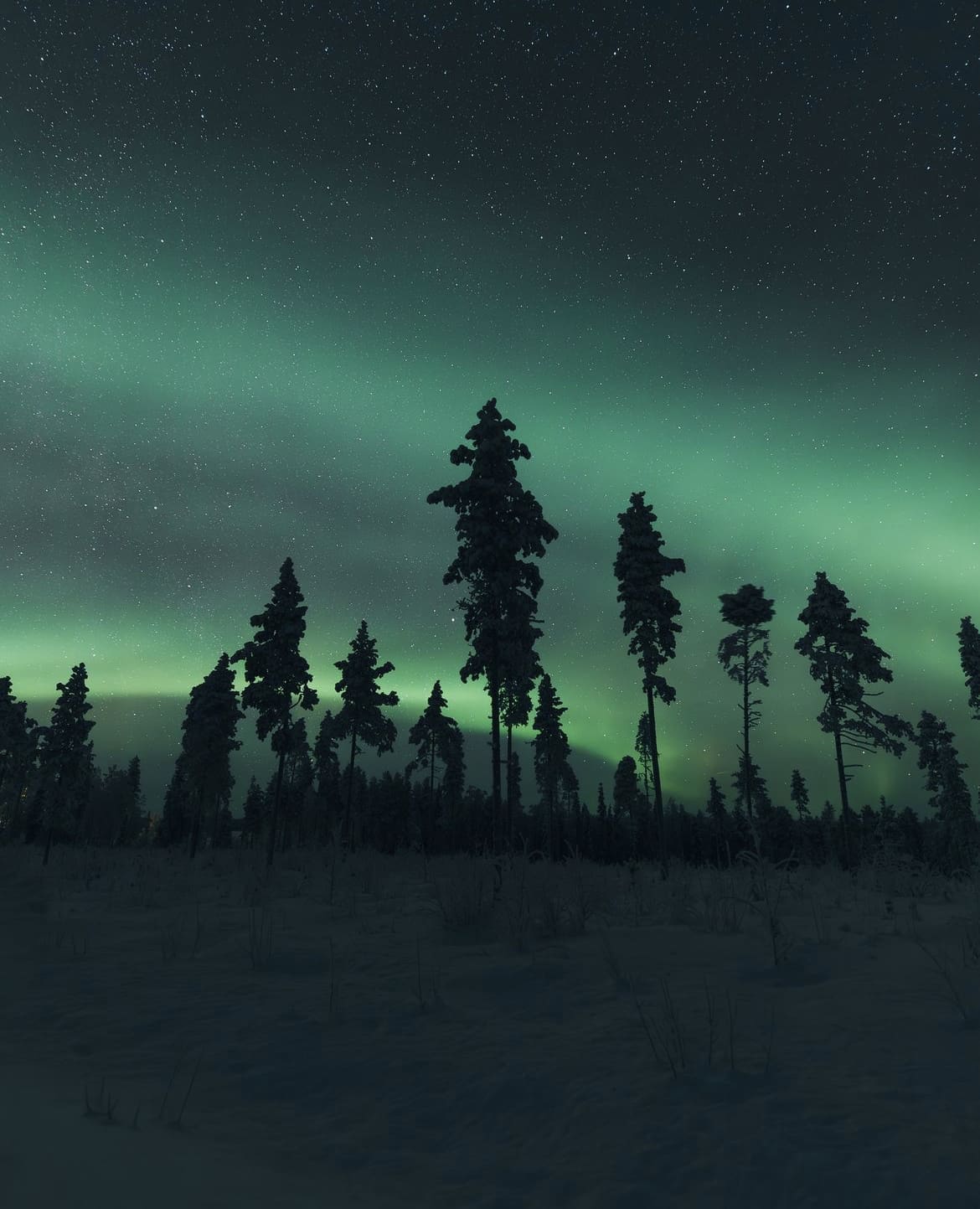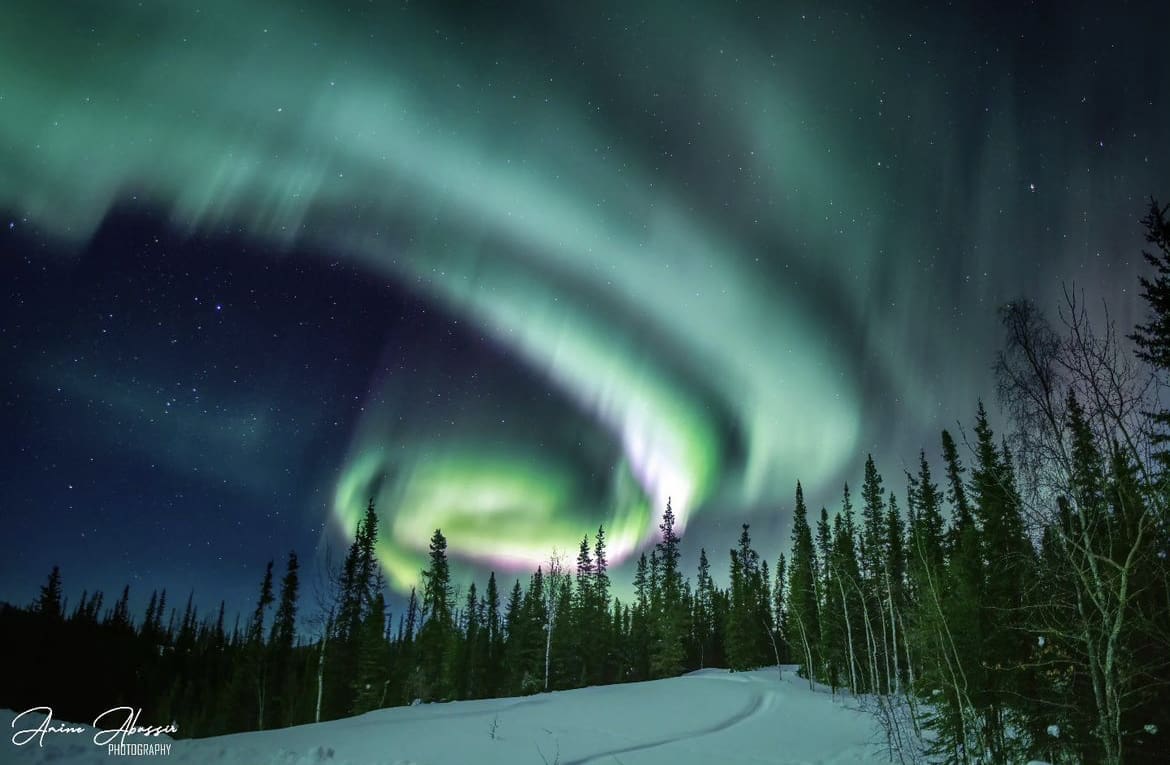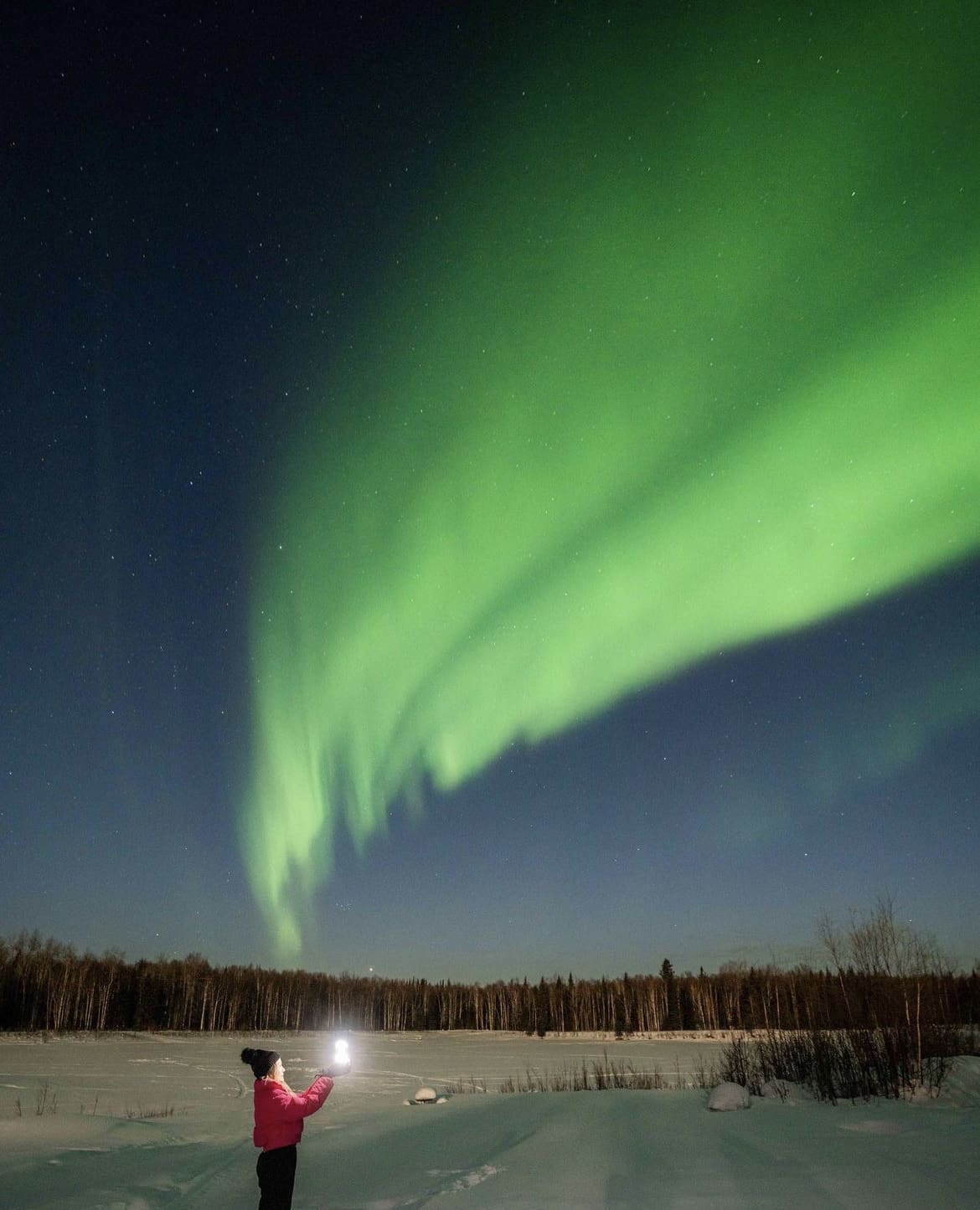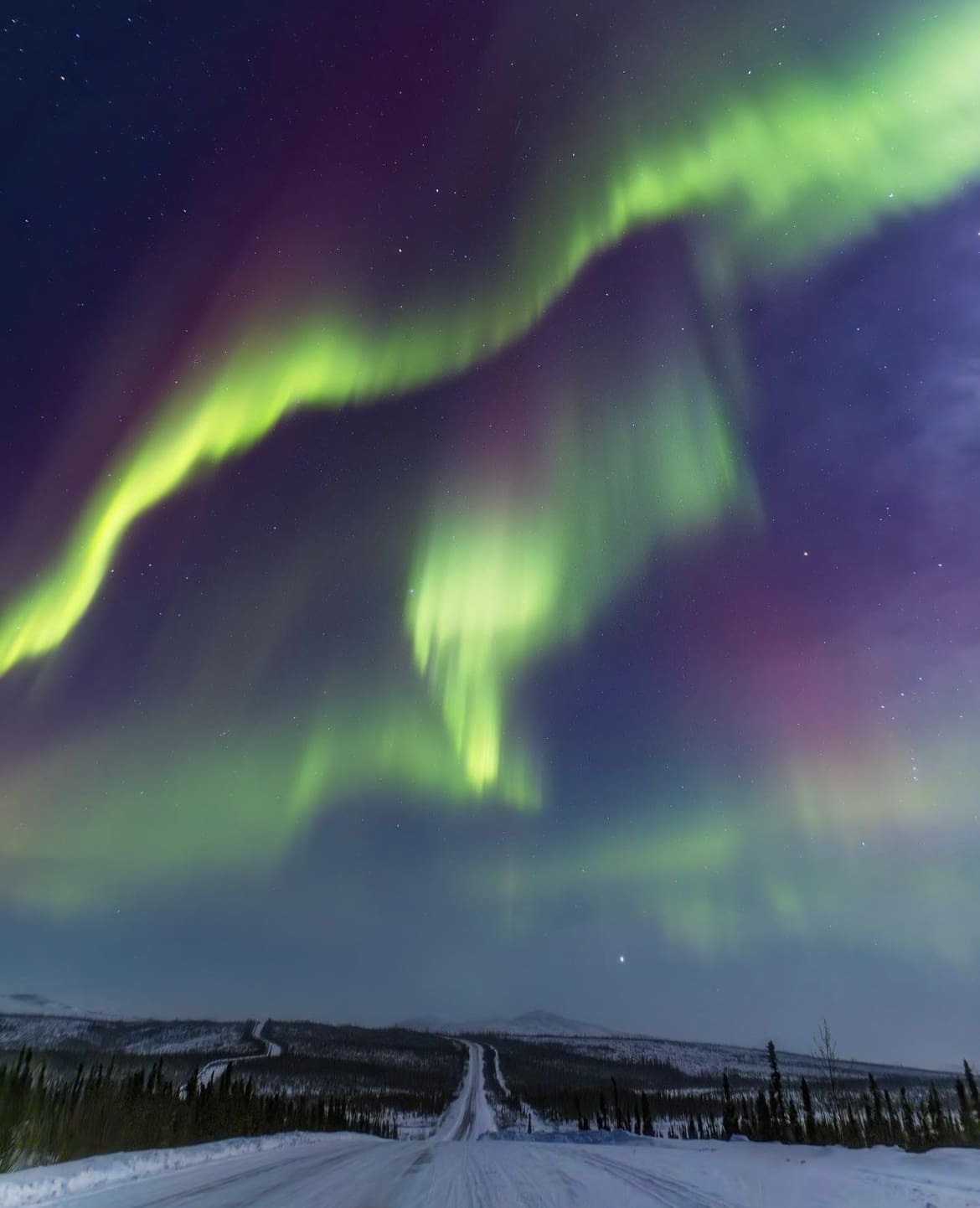[social_warfare]
Ever fantasized about catching that wild light show in the sky, where the night bursts into an insane mix of greens, purples, and pinks? Alaska’s your ultimate stage for this magical phenomenon, offering front-row seats to the Aurora Borealis – a spectacle that’s not just a feast for the eyes but a soul-stirring adventure. Let’s embark on this epic journey to figure out the prime time to witness the Northern Lights in Alaska, where nature spills its best-kept secrets.
What’s the Deal with the Northern Lights?
Before we dash off chasing the Northern Lights, let’s decode what makes the sky light up. The Aurora Borealis, a.k.a. the Northern Lights, is nature’s own light show, thanks to solar particles crashing into Earth’s atmosphere.
These cosmic clashes light up the polar skies, and thanks to Alaska chilling right under the “Auroral Oval,” we get VIP access to the show. Alaska’s epic landscapes serve as the perfect backdrop for the Auroras to strut their stuff.

Best Time to View the Northern Lights in Alaska
Catching the Aurora is all about timing, with visibility hinging on solar shenanigans, weather whims, and good old darkness. Here’s your go-to guide for planning your Alaskan Aurora chase:
Late August to Mid-April: Aurora Season
Catch the Northern Lights in Alaska between late August and mid-April. The colder, darker months are your best bet, offering long nights for the Auroras to go all out.
September to November: Fall Fireworks
Early season, from September to November, dishes out softer weather and fewer crowds. Fall colors add a dramatic flair, and unfrozen lakes and rivers mirror the Auroras, doubling the wow factor.
December to March: Prime Time
Deep winter, December to March, is when things get real. It’s peak Aurora time with the darkest nights. Sure, it’s freezing, but that crystal-clear winter air makes the lights pop like nowhere else.
April: Last Call
Come April, as days get longer, it’s your last shot to catch the show before summer hits. It’s hit or miss, but warmer days and a chance to see Alaska’s seasons switch gears add a unique twist to the hunt.
Factors Affecting Visibility
- Solar Activity: More solar flares mean more Aurora action.
- Weather: You need clear, cloudless skies for the best view. Alaska’s weather can be fickle, so stay flexible.
- Moon Phase: Dark nights during a new moon are perfect for Aurora spotting.

The Best Spots in Alaska for Chasing the Northern Lights
Alaska’s huge and offers a ton of cool places to catch the Northern Lights, each with its own vibe and perks. Let’s dive into the top spots for your Aurora chasing adventure:
Fairbanks: The Hotspot
Right in the heart of Alaska, Fairbanks is basically the Northern Lights capital. Sitting snug under the “Auroral Oval,” it’s got the perfect seat for the light show. There are loads of tours and cozy lodges designed for Aurora peepers, making it super easy and comfy to get your fix of the lights.
Denali National Park and Preserve: Nature’s Theater
Picture this: The Northern Lights doing their thing over Denali, the tallest mountain in North America. The epic landscapes here make the lights even more dramatic. While getting around in winter might be a bit tricky, the areas around the park are prime spots for those seeking a quieter place to watch the skies light up.
The Brooks Range: For the Wild at Heart
If you’re up for an adventure, the Brooks Range is your place. It’s as wild as Alaska gets, with next to no light pollution messing with your view. It’s remote, sure, but that’s all part of the charm. A guided tour is a smart move to tackle the rugged terrain safely.
Nome and the Bering Sea Coast: Culture Plus Lights
Heading west to Nome and along the Bering Sea Coast gives you a side of culture with your Aurora hunting. The lights reflecting off the frozen sea are something else, and the area’s rich culture and history add a whole new layer to the experience. Think winter festivals and dog sledding to mix things up.
Hidden Gems: Off the Beaten Path
Alaska’s full of secret spots that are awesome for watching the Northern Lights, without all the crowds. Places like the Yukon Delta, Chena Hot Springs, and just outside Anchorage can surprise you with some of the best shows, minus the fuss.
Where to Stay: Picking the Perfect Northern Lights Accomodation
High-end Lodges and Resorts
If you’re not skimping on comfort, check out the lodges and resorts around Fairbanks and Denali. They’re all about the Aurora experience, with cool perks like Aurora alarms and tours, and some even have glass-roofed cabins so you can watch the lights from bed.
Cabins and Quiet Retreats
Want to get closer to nature? A cabin or a secluded retreat is the way to go. You’ll get a peaceful spot to watch the lights without a crowd. Places like Chena Hot Springs not only offer a great view but also let you soak in thermal springs, which is pretty awesome.
Budget-Friendly Stays
Traveling on a tight budget? No worries. Hostels and guesthouses, especially around Fairbanks and Anchorage, are tuned into the Aurora scene. They often have shared tours and activities that won’t empty your wallet.
One-of-a-Kind Stays
For something totally different, keep an eye out for igloos, yurts, or ice hotels. They offer a unique Alaskan experience that’s as unforgettable as the Northern Lights themselves, blending adventure with a comfy stay.
Trip Tips: Making the Most of Your Northern Lights Quest
Turning up and hoping for the best won’t cut it if you want to catch the Northern Lights. Here are some things to keep in mind:
Timing is Key
We’ve gone over the best times to see the lights, but keeping an eye on space weather and Aurora forecasts can really up your game. There are tons of websites and apps that can help you plan your nights.
Dress Like You Mean It
Alaskan winters don’t mess around. Layer up with good thermal gear, a solid jacket, hat, gloves, and waterproof boots so you can hang outside without turning into a popsicle.
Getting Around Safely
Driving in winter here can be a beast. If you’re not down with navigating snow and ice, look into tours or local transport options. And always let someone know where you’re headed, especially if you’re venturing off the beaten path.
Snap It Like a Pro
Want to capture the lights? A good camera and tripod are your best friends. Bring extra batteries—they die fast in the cold—and get to know your camera’s settings before you head out.
Patience
Aurora watching is a waiting game. Clear skies and the right solar conditions need to line up, so plan for a few nights of sky gazing to boost your chances of a spectacular view.
How to Capture the Moment: Photography Tips
Capturing the Northern Lights isn’t just about hitting the shutter button; it’s about the right place, the right time, and having a bit of gear know-how. Let’s break it down into bite-sized pieces:
Getting to Know Your Camera
- Manual Mode: Kick your camera into manual mode. Auto just won’t cut it for the Northern Lights. You’ll get to play with the ISO, aperture, and shutter speed to get those jaw-dropping shots.
- ISO: Start at ISO 800 and tweak from there. Brighter Auroras might need less; dimmer ones might need more. Just watch out for grainy pics with higher ISO settings.
- Aperture: Go as low as your lens lets you (that’s the f-number) to suck in all the light you can.
- Shutter Speed: Kick off with 15 seconds. Too long, and you’ll blur the lights; too short, and you might not catch them at all.
The Trusty Tripod
A good tripod is a must. It keeps your camera still for those crisp shots during long exposures.
Avoiding the Shakes
Use a remote shutter release or your camera’s timer to take pics without wobbling the camera.
Battling the Cold
Batteries hate the cold and die fast, so pack extras and keep them toasty. And don’t forget a big enough memory card for all your shots.
Practice Makes Perfect
Try these settings out before your trip if you can. And once you’re out there, patience is your best friend. The Northern Lights can be a bit shy, and nailing that perfect shot takes time and a bit of luck.
Amping Up Your Experience: Tours and Things to Do
Sure, the Northern Lights are the main event, but Alaska in winter is like a giant playground of cool stuff to do:
Northern Lights Tours
Hop on a tour for some unique viewing spots like cozy lodges or heated yurts, and maybe even some night-time dog sled action.
Dog Sledding
Rushing through the snowy landscape behind a team of huskies? Yes, please. It’s a blast during the day and perfectly rounds out your Aurora-filled nights.
Ice Fishing
Chill out with a bit of ice fishing. It’s a peaceful way to soak in the scenery by day and just cool Alaskan vibes.
Hot Springs
Unwind in places like Chena Hot Springs. Imagine soaking in warm water while the Northern Lights dance above. Magic.
Dive into the Culture
Check out museums, cultural centers, and historical sites to get the lowdown on Alaska’s history and the indigenous peoples.
Pro Tips from Locals
To really nail your Northern Lights trip, keep these nuggets of wisdom in mind:
Be Like Water
Alaska’s weather is all over the place. Stay flexible, and be ready to move if the weather or Aurora forecast says so.
Eat Like a Local
Don’t skip on the local eats like salmon, crab, and reindeer sausage. It’s part of the adventure.
Festival Fun
Jump into winter festivals for some extra fun and a peek into Alaskan culture.
Love Mother Nature
Alaskans are big on keeping their state pristine. Respect the environment, wildlife, and join in on conservation efforts.
Chat Up the Locals
Alaskans are a friendly bunch and love their home. Chatting with them might just lead you to the best Aurora spots or some hidden gems.
FAQs About The Northern Lights In Alaska
Best month for Northern Lights in Alaska? Peak times are December to March when nights are long and dark.
Need a pro camera to shoot the Lights? Not really. Even smartphones or basic cameras with manual settings can do the trick if you know how to use them.
Can I see the Lights from Anchorage? It’s possible but not ideal due to light pollution. Heading to places like Fairbanks or Denali ups your chances big time.
How cold does it get? It can get super cold, especially from December to March, with temps dropping to -30°F (-34°C) or even lower. Dress like an onion – in layers.
Ready for an adventure? Alaska’s Northern Lights are calling, and now you’ve got the inside scoop on making the most of your journey.






